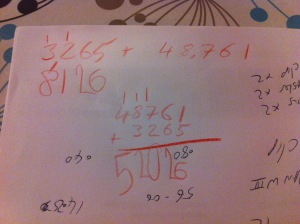I posted earlier this month about what our homeschool core curricula were going to be for 2019.
Today I will share the full list of different books we will be using in our two core language based curricula – Build Your Library and Bravewriter. To make it helpful for you I’ve split them in to their different learning areas, and provided a key for the tags at the end of each title.
BYL GRADE 4 – The Modern World
A – Audible
K – Kindle
L – Library
History:
- The Story of the World: History for the Classical Child, Volume 4: The Modern Age
- Commodore Perry in the Land of the Shogun (K)
- Fields of Fury: The American Civil War
- Where Poppies Grow: A World War I Companion
- Gandhi
- Escape from Saigon: How a Vietnam War Orphan Became an American Boy (K)
Literature:
These are books that I will be reading aloud to the kids.
- Alice’s Adventures in Wonderland
- The Twenty-One Balloons
- From the Mixed-up Files of Mrs. Basil E. Frankweiler (A)
- Nory Ryan’s Song
- Harry Potter and the Sorcerer’s Stone
- The Singing Tree
- Angel on the Square
- When My Name Was Keoko
- Redwall (A)
- Because of Winn-Dixie (L)
- Shooting Kabul
Readers:
These are the books that the kids will be reading. Master Oh may skip some of these, we will see how his year progresses.
- The Capture (Guardians of Ga’hoole, Book 1) (L)
- James and the Giant Peach (L)
- Bull Run
- Rodzina
- Stuart Little (L)
- The Toothpaste Millionaire
- Maggie’s Door
- The Wizard of Oz
- The Water Horse (L)
- Number the Stars (L)
- Sadako and the Thousand Paper Cranes
- The Borrowers (L)
- Who Was Martin Luther King, Jr.?
- The School Story
- Journey to Jo’burg: A South African Story
Poetry:
- Knock at a Star: A Child’s Introduction to Poetry
Science:
- The New Way Things Work (L)
- 10 Inventors Who Changed the World (L)
- The Usborne Internet-Linked Science Encyclopedia
Art:
- Discovering Great Artists: Hands-On Art for Children in the Styles of the Great Masters
- The Usborne Introduction to Art
BRAVEWRITER – Arrows
As you can see there is A LOT of crossover between the books studied here and those we will be or have just read as part of our BYL curriculum. We will marry up the Arrow to the time of year when we are reading the book as part of BYL. I can’t tell you how happy I am that they are this well aligned. The amount of reading it saves!
- Aug: Penderwicks at Last
- Sep: Redwall
- Oct: Mary Poppins
- Nov: Journey to Jo’burg
- Dec: Because of Winn Dixie
- Jan: Sadako and the Thousand Paper Cranes
- Feb: Freedom Train
- Mar: Harriet the Spy
- Apr: By the Great Horn Spoon
- May: Harry Potter and the Sorcerer’s Stone
The Money
For the full range of curricula, for two kids we are looking at ~NZ$500.
This splits down into:
Book Depository: $296 – $15 affiliate rebate = $281
Kindle: $29
Pandia Press: ~$60 for Earth and Space; $23 for The Stargazer’s Notebook.
My Pals Are Here! Maths – 3A & B: $54
My Pals Are Here! Maths – 5A & B: $48
This could have been reduced if I had spent the time to hunt for secondhand books, but frankly my time trying to find them would probably outweigh the savings.
I hope you found that interesting.











